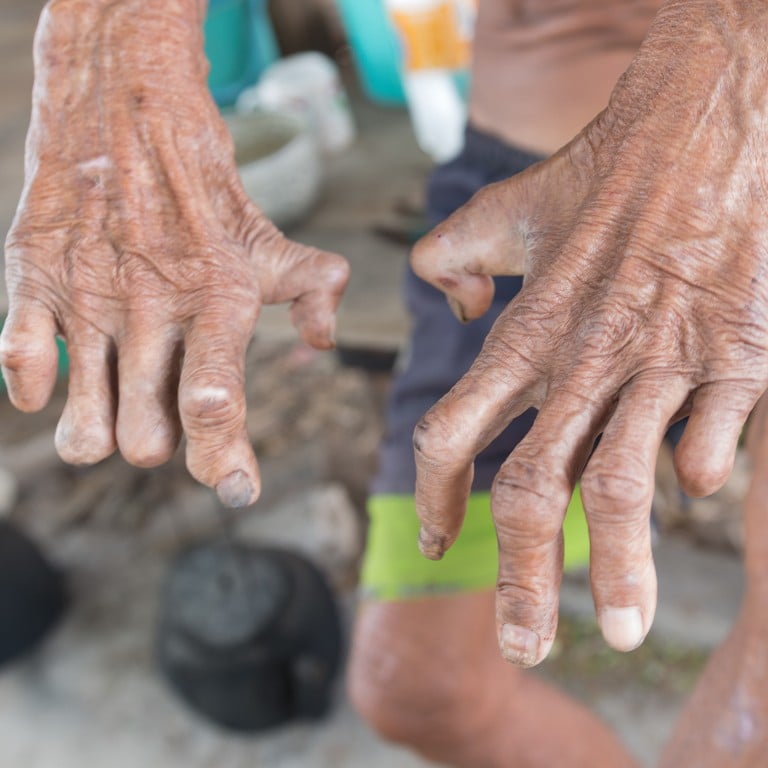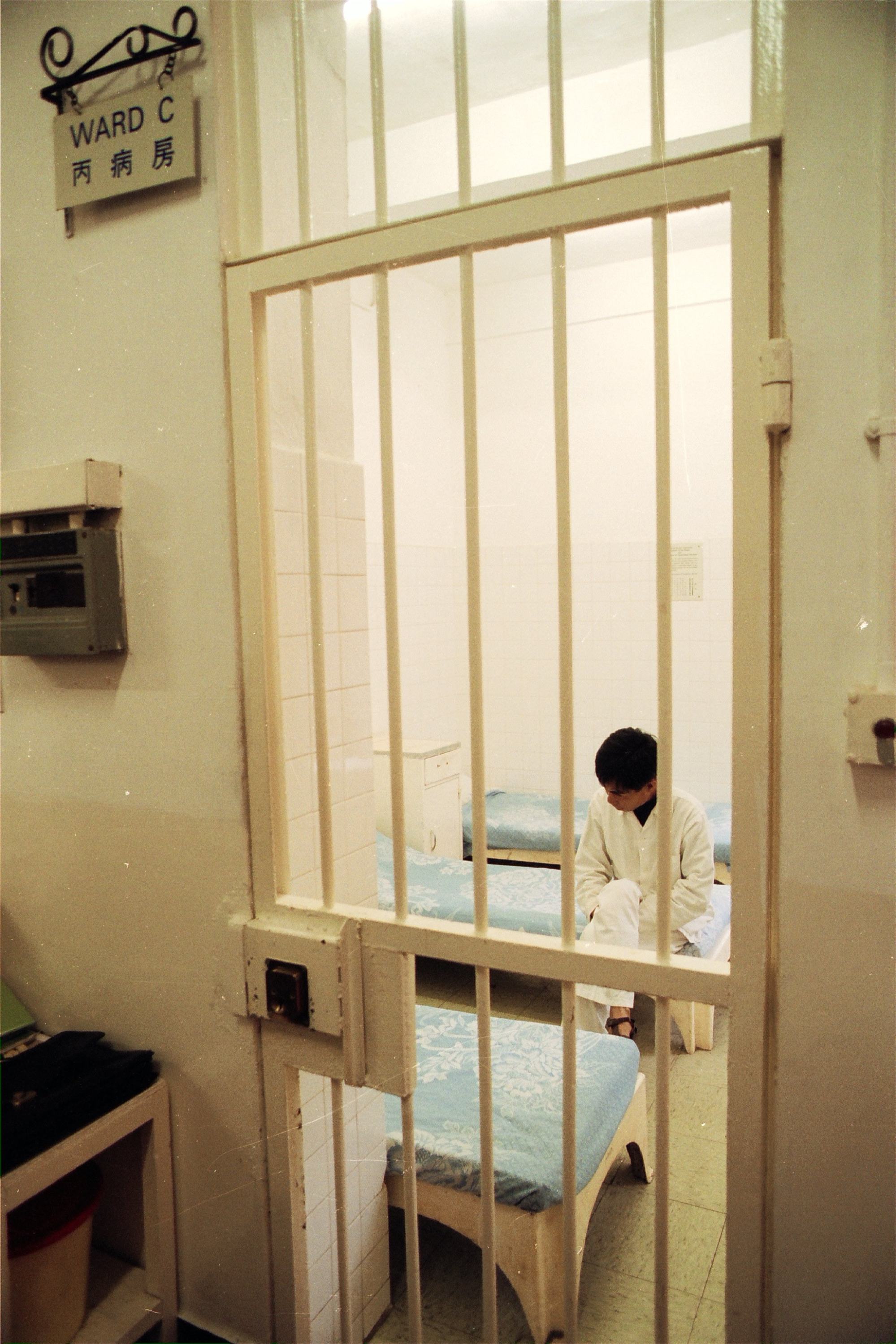
What causes leprosy and is it contagious? Plus symptoms, how it’s treated, the tragedy of its stigma, and why there was a recent outbreak in the US
- Around 2 to 3 million people around the world today have leprosy, with about 200,000 new cases detected yearly – roughly two-thirds of them in India
- One reason for its continued spread is that people are so fearful of being shunned by the community that they don’t come forward when they are infected
A chronic infectious disease that attacks the skin and nerves, leprosy brings to mind images of disfigurement and ostracisation. For centuries, those afflicted suffered while exiled in colonies.
Attitudes have not been helped by its portrayal in the media: as recently as 2017, the hit American horror film It portrayed an evil clown who sometimes takes the form of a nightmarish leper to terrify children.
The stigma that sufferers experience is among its worst impacts. It’s appropriate, then, that the theme for this year’s World Leprosy Day is “Ending Stigma, Embracing Dignity”.
World Leprosy Day falls on the last Sunday of January, except in India, where it is observed on January 30 to coincide with the anniversary of the death of the late Indian spiritual leader Mahatma Gandhi.
Imagine hearing ‘there is no treatment available’: the rare disease battle
Some 2 to 3 million people around the world today have leprosy. About 200,000 new cases are detected yearly, with India accounting for about two-thirds of them. In Hong Kong, six cases were reported in 2022, and one in 2023.
However, some experts believe that the actual number of people suffering from leprosy is 17 times higher than the numbers reported officially.
Leprosy hit the headlines in 2023, when a rising number of cases were reported in the US state of Florida. Researchers there believe they were linked to the nine-banded armadillo, an animal that carries the bacteria responsible for the infection.

What leprosy does to the body
Considered one of the oldest infectious diseases in human history, leprosy is also known as Hansen’s disease, named after the Norwegian doctor who in 1874 discovered its cause: the bacteria Mycobacterium leprae.
Leprosy is a chronic disease that mainly affects the skin, peripheral nerves, the mucosa of the upper respiratory tract and the eyes. It can lead to blindness or paralysis if left untreated, and become disfiguring, making it difficult to use the hands and feet.

Contrary to popular belief, it does not cause fingers and toes to drop off. What it does do is damage nerves, meaning a sufferer is less likely to react to pain, from burns, say, or pressure – which can destroy tissue.
Transmission route still uncertain
One of the biggest concerns surrounding leprosy is that it is still not known exactly how it spreads. Current consensus is that it is probably transmitted through droplets in the air when someone coughs or sneezes. There may be other routes, such as through the skin.
Seeds and nuts are superfoods – 5 of the best for heart health and more
Once someone has contracted leprosy, it takes an average of four years to show symptoms – but it can be as long as 20. This long incubation is problematic, because during this time a patient who doesn’t know they are infected can pass it on to others.
However, many people will never contract leprosy even after prolonged contact with a sufferer – or even a brush with a nine-banded armadillo. Indeed, some studies suggest that most of the population is naturally immune to the disease.
The stigma of leprosy
The real tragedy of leprosy is the stigma experienced by those who suffer from it and one reason for the disease’s continued spread is that people are so fearful of being shunned by the community that they don’t come forward when they might be, or are, infected.
Worldwide, there are more than 100 laws that discriminate against people with leprosy – in some countries, it is grounds for divorce.
This stigma is millennia old: ancient Persians thought leprosy was a punishment from the Sun God. The Bible decreed that those with leprosy should carry a bell to warn of their approach while crying out “unclean, unclean”.

Angela Ki-che Leung’s book Leprosy in China: A History, describes how leprosy in China has been linked to immorality since the Song dynasty (960-1279). This was intensified by the popular idea that the disease could be shed during sexual intercourse, with many stories circulating about women seducing strangers to rid themselves of the disease right up until the 20th century.
Indonesian leprosy survivor crafts new limbs for shunned villagers
Stigma also comes in the form of isolation. People with leprosy have been forced out of their communities for as long as the disease has been about.
China established leprosy villages in the 1950s to treat an estimated 380,000 people with the disease. These villages in remote areas separated residents from their loved ones and the outside world, and laws banned them from marrying or having children. The villages limited the country’s leprosy rate, but were devastating for those forced to live in them.
Leprosy in Hong Kong
A leprosarium opened in Hong Kong in 1951 on an uninhabited island formerly known as Nai Gu Island (Nun’s Island), but renamed Hei Ling Chau (derived from the word “healing” and carrying the meaning of an “island of joyful soul”), to provide shelter and treatment to patients with leprosy.
In the early 1960s, it had as many as 540 patients. It closed down in 1974 and was converted into a treatment centre for drug addicts.

Leprosy was deemed to be officially eliminated in Hong Kong in the mid-1980s when the prevalence rate fell well below 1 per 10,000 people.
A paper published in the Hong Kong Medical Journal in 2006 noted that “leprosy is well controlled in Hong Kong but continued surveillance is required to detect relapses and to ensure good patient compliance with treatment”.
Treatments old and new
Today, leprosy is easy to treat. But it wasn’t always that way.
Ancient – and ineffective – “cures” included the application of virgins’ blood and, for men, castration.
Memories of Hong Kong's last leper colony
The first successful treatment was recorded in 1916 by African-American chemist Alice Ball and involved injecting oil from the seeds of the chaulmoogra tree (Hydnocarpus wightianus).
Now, leprosy is treated using multi-drug therapy (MDT) to protect against bacterial resistance. After just 72 hours of being on MDT, a patient is no longer infectious. After six months to a year, they will be deemed completely cured.

